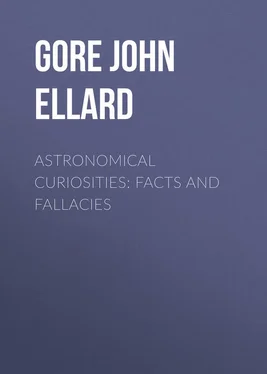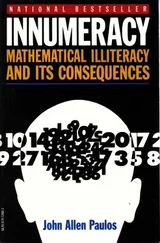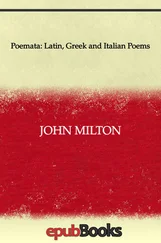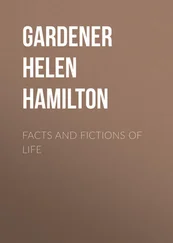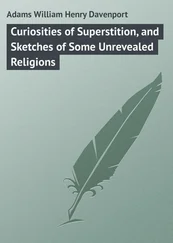John Gore - Astronomical Curiosities - Facts and Fallacies
Здесь есть возможность читать онлайн «John Gore - Astronomical Curiosities - Facts and Fallacies» — ознакомительный отрывок электронной книги совершенно бесплатно, а после прочтения отрывка купить полную версию. В некоторых случаях можно слушать аудио, скачать через торрент в формате fb2 и присутствует краткое содержание. Жанр: Физика, foreign_antique, foreign_prose, на английском языке. Описание произведения, (предисловие) а так же отзывы посетителей доступны на портале библиотеки ЛибКат.
- Название:Astronomical Curiosities: Facts and Fallacies
- Автор:
- Жанр:
- Год:неизвестен
- ISBN:нет данных
- Рейтинг книги:5 / 5. Голосов: 1
-
Избранное:Добавить в избранное
- Отзывы:
-
Ваша оценка:
- 100
- 1
- 2
- 3
- 4
- 5
Astronomical Curiosities: Facts and Fallacies: краткое содержание, описание и аннотация
Предлагаем к чтению аннотацию, описание, краткое содержание или предисловие (зависит от того, что написал сам автор книги «Astronomical Curiosities: Facts and Fallacies»). Если вы не нашли необходимую информацию о книге — напишите в комментариях, мы постараемся отыскать её.
Astronomical Curiosities: Facts and Fallacies — читать онлайн ознакомительный отрывок
Ниже представлен текст книги, разбитый по страницам. Система сохранения места последней прочитанной страницы, позволяет с удобством читать онлайн бесплатно книгу «Astronomical Curiosities: Facts and Fallacies», без необходимости каждый раз заново искать на чём Вы остановились. Поставьте закладку, и сможете в любой момент перейти на страницу, на которой закончили чтение.
Интервал:
Закладка:
With the 18-inch equatorial telescope of the Strasburgh Observatory, M. Wirtz measured the diameter of Neptune, and found from forty-nine measures made between December 9, 1902, and March 28, 1903, a value of 2″·303 at a distance of 30·1093 (earth’s distance from sun = 1). This gives a diameter of 50,251 kilometres, or about 31,225 miles, 176 176 Bulletin, Ast. Soc. de France , January, 1904.
and a mean density of 1·54 (water = 1; earth’s mean density = 5·53). Prof. Barnard’s measures gave a diameter of 32,900 miles, a fairly close agreement, considering the difficulty of measuring so small a disc as that shown by Neptune.
The satellite of Neptune was photographed at the Pulkown Observatory in the year 1899. The name Triton has been suggested for it. In the old Greek mythology Triton was a son of Neptune, so the name would be an appropriate one.
The existence of a second satellite of Neptune is suspected by Prof. Schaeberle, who thinks he once saw it with the 36-inch telescope of the Lick Observatory “on an exceptionally fine night” in 1895. 177 177 Humboldt’s Cosmos , vol. iv. p. 532.
But this supposed discovery has not yet been confirmed. Lassell also thought he had discovered a second satellite, but this supposed discovery was never confirmed. [178] Humboldt’s Cosmos , vol. iv. p. 532.
The ancient Burmese mention eight planets, the sun, the moon, Mercury, Venus, Mars, Jupiter, Saturn, and another named Râhu, which is invisible. It has been surmised that “Râhu” is Uranus, which is just visible to the naked eye, and may possibly have been discovered by keen eyesight in ancient times. The present writer has seen it several times without optical aid in the West of Ireland, and with a binocular field-glass of 2 inches aperture he found it quite a conspicuous object.
When Neptune was visually discovered by Galle, at Berlin, he was assisted in his observation by Prof. d’Arrest. The incident is thus described by Dr. Dreyer, “On the night of June 14, 1874, while observing Coggia’s comet together, I reminded Prof. d’Arrest how he had once said in the course of a lecture, that he had been present at the finding of Neptune, and that ‘he might say it would not have been found without him.’ He then told me (and I wrote it down the next day), how he had suggested the use of Bremiker’s map (as first mentioned by Dr. Galle in 1877) and continued, ‘We then went back to the dome, where there was a kind of desk, at which I placed myself with the map, while Galle, looking through the refractor, described the configurations of the stars he saw. I followed them on the map one by one, until he said: “And then there is a star of the 8th magnitude, in such and such a position,” whereupon I immediately exclaimed: “That star is not on the map.”’” 178 178 Copernicus , vol. ii. p. 64.
This was the planet. But it seems to the present writer that if Galle or d’Arrest had access to Harding’s Atlas (as they probably had) they might easily have found the planet with a good binocular field-glass. As a matter of fact Neptune is shown in Harding’s Atlas (1822) as a star of the 8th magnitude, having been mistaken for a star by Lalande on May 8 and 10, 1795; and the present writer has found Harding’s 8th magnitude stars quite easy objects with a binocular field-glass having object-glasses of two inches diameter, and a power of about six diameters.
Supposed Planet beyond Neptune. – The possible existence of a planet beyond Neptune has been frequently suggested. From considerations on the aphelia of certain comets, Prof. Forbes in 1880 computed the probable position of such a body. He thought this hypothetical planet would be considerably larger than Jupiter, and probably revolve round the sun at a distance of about 100 times the earth’s mean distance from the sun. The place indicated was between R.A. 11h 24m and 12h 12m, and declination 0° 0′ to 6° 0′ north. With a view to its discovery, the late Dr. Roberts took a series of eighteen photographs covering the region indicated. The result of an examination of these photographs showed, Dr. Roberts says, that “no planet of greater brightness than a star of the 15th magnitude exists on the sky area herein indicated.” Prof. W. H. Pickering has recently revived the question, and has arrived at the following results: Mean distance of the planet from the sun, 51·9 (earth’s mean distance = 1); period of revolution, 373½ years; mass about twice the earth’s mass; probable position for 1909 about R.A. 7h 47m, north declination 21°, or about 5° south-east of the star κ Geminorum. The supposed planet would be faint, its brightness being from 11½ to 13½, according to the “albedo” (or reflecting power) it may have. 179 179 Knowledge , May, 1909.
Конец ознакомительного фрагмента.
Текст предоставлен ООО «ЛитРес».
Прочитайте эту книгу целиком, купив полную легальную версию на ЛитРес.
Безопасно оплатить книгу можно банковской картой Visa, MasterCard, Maestro, со счета мобильного телефона, с платежного терминала, в салоне МТС или Связной, через PayPal, WebMoney, Яндекс.Деньги, QIWI Кошелек, бонусными картами или другим удобным Вам способом.
1
Comptes Rendus , 1903, December 7.
2
Nature , April 11, 1907.
3
Astrophysical Journal , vol. 19 (1904), p. 39.
4
Astrophysical Journal , vol. 21 (1905), p. 260.
5
Knowledge , July, 1902, p. 132.
6
Nature , April 30, 1903.
7
Ibid. , May 18, 1905.
8
Ibid. , May 18, 1905.
9
Nature , June 29, 1871.
10
Nature , October 15, 1903.
11
The Life of the Universe (1909), vol. ii. p. 209.
12
The World Machine , p. 234.
13
Quoted in The Observatory , March 1908, p. 125.
14
The Observatory , September, 1906.
15
Nature , March 1, 1900.
16
Cycle of Celestial Objects , p. 96.
17
Ast. Nach. No. 3737.
18
Observatory , September, 1906.
19
Nature , November 29 and December 20, 1894.
20
Bulletin, Ast. Soc. de France , July, 1898.
21
Observatory , vol. 8 (1885), pp. 306-7.
22
Nature , October 30, 1902.
23
Charles Lane Poor, The Solar System , p. 170.
24
Smyth, Celestial Cycle , p. 60.
25
Denning, Telescopic Work for Starlight Evenings , p. 225.
26
The Observatory , 1894, p. 395.
Читать дальшеИнтервал:
Закладка:
Похожие книги на «Astronomical Curiosities: Facts and Fallacies»
Представляем Вашему вниманию похожие книги на «Astronomical Curiosities: Facts and Fallacies» списком для выбора. Мы отобрали схожую по названию и смыслу литературу в надежде предоставить читателям больше вариантов отыскать новые, интересные, ещё непрочитанные произведения.
Обсуждение, отзывы о книге «Astronomical Curiosities: Facts and Fallacies» и просто собственные мнения читателей. Оставьте ваши комментарии, напишите, что Вы думаете о произведении, его смысле или главных героях. Укажите что конкретно понравилось, а что нет, и почему Вы так считаете.
